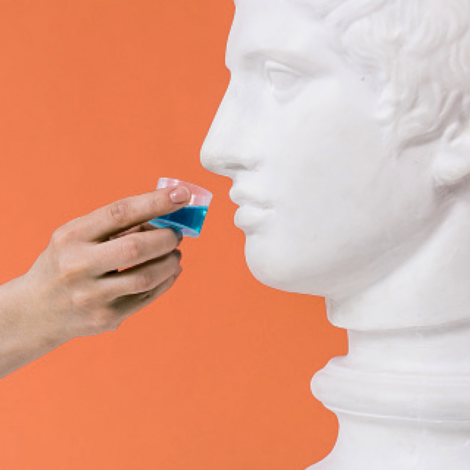I could tell you how many red-eye flights I took in 2024, but then I’d have to kill you. As Air Mail’s travel editor, I frequently fly between London (where I live now) and New York (my former and yet forever home) about nine times a year. I also visit far-flung destinations every few months, so overnight flights come with the territory. I’ve developed an absurdly detailed method for arriving at my destination as rested (and, equally important, rested-looking) as possible. It didn’t even fail me during a three-leg, 22-hour journey from Osaka, Japan, to Wichita, Kansas. So go ahead. Call me crazy. I can handle it.
THE DAY BEFORE THE FLIGHT:
I start tweaking my sleep schedule—going to bed and waking up an hour earlier or later, depending on where I’m going. I am not ashamed of using low-dose melatonin when needed—just a milligram or two does the trick without leaving me groggy.
THE MORNING OF THE FLIGHT:
Running, sprint intervals, lifting weights—I try to start the day with some truly exhausting form of exercise before I head to the airport, so that I’m tired enough to sleep on the plane. Ideally, this exercise happens at a gym so I can pop into the sauna for 20 minutes. Restorative!
I always wear the same outfit: the High Sport stretch pants you’ve read about everywhere, a lightweight Negative Underwear turtleneck, a black cashmere crewneck—even in summer, because I’m always freezing on an overnight flight—compression socks, and black Bally loafers or boots. I pack a pair of thick, wool Devold of Norway socks that feel like slippers, to wear over my compression hose when I go to sleep, just because it feels so cozy. My trusty, 10-year-old Brunello Cucinelli wrap is large enough to double as a blanket—so much nicer than the ones on the plane.
En route to the airport, I down an entire bottle of water with salt and electrolytes, so that it’s empty by the time I go through security. In the lounge (or the least awful airport restaurant), I eat a light and healthy-ish meal, with as many vegetables as possible, and then do my bedtime routine, even in the grossest airport bathroom. I wash my face, brush my teeth, take my evening supplements (magnesium and lysinate glycinate), and apply all my moisturizers, serums, and sunscreens. (Yes, really—those rays can penetrate the plane’s windows!) I look insane and I don’t care. I re-fill my water bottle but don’t drink anything—theoretically, I am sufficiently hydrated from what I consumed in the car, and I don’t want to interrupt my sleep to go to the bathroom (which I try to avoid at all costs). When the flight starts boarding, I touch my toes and squat a few times. This is when I take melatonin, usually 1.5 milligrams. But, importantly, I wait until they’ve actually scanned my boarding pass and I’m walking down the jet bridge. Once, I took it in the waiting area, and the flight was delayed for an hour and a half. I stood there drowsy and drugged, but it wasn’t entirely unpleasant.
ON THE PLANE:
I never eat the evening airplane meal or drink a drop of alcohol. I look back on the days when I’d wash down an Ambien with a glass of red wine and think, amateur. I apply my face mask, eye mask, headphones, and socks and zone out. The goal is to fall asleep on takeoff as the motion of the plane rocks me to sleep. Sometimes I listen to the Huberman Lab’s “Non-Sleep Deep Rest” meditation on the host’s YouTube channel to help me relax. But usually I don’t need it.
On a seven-hour flight, I sleep about five hours and then start adjusting to the new time zone by waking up, eating a high-protein breakfast, and, yes, drinking the plane coffee—I have a soft spot for vile brew that dates back to my student days in Paris. I also guzzle another bottle of electrolyte-infused water. (I always have a few sachets in my carry-on.)
AT MY DESTINATION:
Before I even unpack, I get some sunlight and exercise. A 30-minute outdoor jog is ideal because it’s not too exhausting but ticks off a lot of boxes in terms of recovery. Then I shower, unpack, and, if it’s before two p.m., nap for no more than 40 minutes. I head out for lunch at a restaurant that requires a walk—the longer, the better. I walk as much as possible before going to bed, at 10:30 p.m., assisted by melatonin. I’ll usually take three milligrams an hour before bedtime, which helps me get at least six hours—survivable! I wake up and tell myself that I’m not jet-lagged, and most of the time I’m really not.
Ashley Baker is the Executive Editor at Air Mail Look





